 W
W1st Intelligence, Surveillance and Reconnaissance Brigade of the British Army was created as part of the Army 2020 reforms. Falling under Force Troops Command, now re-designated 6th UK Division. it became operational on 1 September 2014 and has responsibility for all British Army ISR capabilities including electronic warfare and signals intelligence; Weapon Locating Radar and other technical surveillance equipment; surveillance and target acquisition patrols; and unmanned aerial systems. It is intended to be able to deploy tailored ISR Groups to support deployments.
 W
WThe 1st Mountain Division was a West German mountain infantry formation. It was part of the II Corps of the Bundeswehr. In the wake of military restructuring brought about by the end of the Cold War, the 1st Mountain Division was disbanded in 2001.
 W
WLes Voltigeurs de Québec is a Primary Reserve infantry regiment of the Canadian Forces. The name of the regiment commemorates another older French-speaking Canadian militia light infantry unit, the Canadian Voltigeurs. The founder of the Canadian Voltigeurs, lieutenant-colonel Charles-Michel d'Irumberry de Salaberry, was the father of the two men who raised Les Voltigeurs de Québec. The regiment was formed in March 1862, with its headquarters in Quebec City, by the amalgamation into a regiment of eight independent Volunteer Militia Rifle companies. The first of these companies was originally raised in December 1861. Between 1862 and 1867 these companies were frequently disbanded, reformed and renumbered. In 1942 it provided an armoured regiment.
 W
WThe 51st Battalion, Far North Queensland Regiment is an Australian Army Regional Force Surveillance Unit headquartered at Porton Barracks in Cairns. The battalion's primary role is to conduct reconnaissance and surveillance tasks in support of border security operations. Its area of operations includes the Torres Strait and the Cape York littoral environment. Additional tasks for 51FNQR include the collection and collation of military geographic information as well as community engagement and disaster relief operations.
 W
WThe 75th Ranger Regiment, also known as Army Rangers, is an elite special operations force that is a combat deployable unit in the United States Army Special Operations Command. The regiment is headquartered at Fort Benning, Georgia and is composed of a regimental headquarters company, a military intelligence battalion, a special troops battalion, and three Ranger battalions.
 W
WThe 101st Amphibious Reconnaissance Battalion, known as the Sea Dragon Frogmen, is an elite special operations unit of the Republic of China Army.
 W
WThe Airborne Special Service Company, alternatively known as the Liang Shan Special Operations Company (涼山特勤隊), is a special forces unit belonging to the Republic of China Army. The unit is reportedly based in Taiwan Pingtung County and tasked with carrying out commando operations, including decapitation strikes, in the event of a war.
 W
WThe Army Ranger Wing (ARW) is the special operations force of the Irish Defence Forces, the military of Ireland. A branch of the Irish Army, it also selects personnel from the Naval Service and Air Corps. It serves at the behest of the Defence Forces and Government of Ireland, operating internally and overseas, and reports directly to the Chief of Staff. The ARW was established in 1980 with the primary role of counter terrorism and evolved to both special operations and counter terrorism roles from 2000 after the end of conflict in Northern Ireland. The unit is based in the Curragh Camp, County Kildare. The 2015 White Paper on Defence announced that the strength of the ARW would be considerably increased.
 W
WThe Artists Rifles is a regiment of the British Army Reserve. Raised in London in 1859 as a volunteer light infantry unit, the regiment saw active service during the Second Boer War and the First World War, earning a number of battle honours. It did not serve outside Britain during the Second World War, as it was used as an officer training unit at that time. The regiment was disbanded in 1945, but in 1947 it was re-established to resurrect the Special Air Service Regiment. Today, the full title of the regiment is 21 Special Air Service Regiment (Artists) (Reserve) and with 23 Special Air Service Regiment (Reserve), it forms the Special Air Service (Reserve) part of the United Kingdom Special Forces (UKSF).
 W
WThe Canadian Airborne Regiment was a Canadian Forces formation created on April 8, 1968. It was not an administrative regiment in the commonly accepted British Commonwealth sense, but rather a tactical formation manned from other regiments and branches. It was disbanded in 1995 after the Somalia Affair.
 W
WThe Canadian Rangers are a 5,000-strong sub-component of the Canadian Armed Forces reserve that provide a limited military presence in Canada's sparsely settled northern, coastal, and isolated areas where it would not be economically or practically viable to have conventional Army units. Formally established on May 23, 1947, a primary role of this part-time force is to conduct surveillance or sovereignty patrols as required. Some Canadian Rangers also conduct inspections of the North Warning System (NWS) sites and act as guides, scouts, and subject-matter experts in such disciplines as wilderness survival when other forces are in their area of operations.
 W
WThe Canadian Special Operations Regiment is an elite unit of the Canadian Armed Forces. It forms part of the Canadian Special Operations Forces Command. As a special forces unit, the regiment's roles include conducting complex or difficult raids, capturing strategic facilities and undertaking reconnaissance. It is also capable of working with the armed forces of other countries.
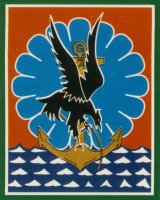 W
WThe Commando Parachute Group are the elite operational pathfinders units within the 11th Parachute Brigade of the French Army. They are classified as Second Circle by the Commandement des Opérations Spéciales Circle System. These Commandos form within the various Paratrooper Regiments of France, elite sections of Chute opérationnelle and commando instructors, attached in general to the reconnaissance and support company (CEA) or the logistics and command company (CCL). In case of global rising conflicts, these commandos are dropped ahead of forward ground forces.
 W
WThe Commandos, also known as the British Commandos, were formed during the Second World War in June 1940, following a request from the Prime Minister of the United Kingdom, Winston Churchill, for a force that could carry out raids against German-occupied Europe. Initially drawn from within the British Army from soldiers who volunteered for the Special Service Brigade, the Commandos' ranks would eventually be filled by members of all branches of the British Armed Forces and a number of foreign volunteers from German-occupied countries. By the end of the war 25,000 men had passed through the Commando course at Achnacarry. This total includes not only the British volunteers, but volunteers from Greece, France, Belgium, Netherlands, Norway, Poland, and the United States Army Rangers, which were modelled on the Commandos.
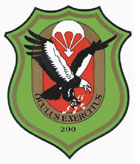 W
WThe FSLK200 was a highly specialized reconnaissance unit of the German Armed Forces (Bundeswehr). It has also been described as a deep reconnaissance company.
 W
WFrumentarii were officials of the Roman Empire, originally collectors of wheat (frumentum), who also acted as the secret service of the Roman Empire in the 2nd and 3rd centuries.
 W
WGebirgsjäger are the light infantry part of the alpine or mountain troops (Gebirgstruppe) of Germany, Austria and Switzerland. The word Jäger is a characteristic term used for light infantry in German speaking countries.
 W
WThe Honourable Artillery Company (HAC) was incorporated by royal charter in 1537 by King Henry VIII and is considered the second-oldest military corps in the world. Today, it is a registered charity whose purpose is to attend to the "better defence of the realm". This purpose is primarily achieved by the support of the HAC Regiment and a detachment of City of London Special Constabulary. The word "artillery" in "Honourable Artillery Company" does not have the current meaning that is generally associated with it, but dates from a time when in the English language that word meant any projectile, including for example arrows shot from a bow. The equivalent form of words in modern English would be either "Honourable Infantry Company" or "Honourable Military Company".
 W
WJäger is a German military term that originally referred to light infantry, but has come to have wider usage.
 W
WThe Long Range Desert Group (LRDG) was a reconnaissance and raiding unit of the British Army during the Second World War.
 W
WA long-range reconnaissance patrol, or LRRP, is a small, well-armed reconnaissance team that patrols deep in enemy-held territory.
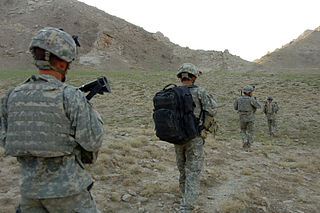 W
WLong-range surveillance (LRS) teams were elite, specially-trained surveillance units of the United States Army employed for clandestine operation by Military Intelligence for gathering direct human intelligence information deep within enemy territory. Classic LRS employment is to infiltrate deep into enemy territory, construct hide and surveillance sites, and provide continuous surveillance/special reconnaissance of an intelligence target of key interest.
 W
WThe Lovat Scouts was a British Army unit first formed during the Second Boer War as a Scottish Highland yeomanry regiment of the British Army. They were the first known military unit to wear a ghillie suit and in 1916 formally became the British Army's first sniper unit, then known as "sharpshooters". It served in the First World War and the Second World War and today forms A Company within the 2nd Battalion, 51st Highland Volunteers.
 W
WM Special Unit, was a joint Allied special reconnaissance unit, part of the Services Reconnaissance Department (SRD), in the South West Pacific theatre of the Second World War. A joint Australian, New Zealand, Dutch and British military intelligence unit, it saw action in New Guinea and the Solomon Islands between 1943–1945, against the Empire of Japan.
 W
WThe 1st Marine Infantry Parachute Regiment is one of three regiments in the French Army Special Forces Command.
 W
WThe New Zealand Special Air Service, abbreviated as 1 NZSAS Regt, was formed on 7 July 1955 and is the special forces unit of the New Zealand Army, closely modelled on the British Special Air Service (SAS). It traces its origins to the Second World War and the famous Long Range Desert Group that New Zealanders served with.
 W
WThe NORFORCE is an infantry regiment of the Australian Army Reserve. Formed in 1981, the regiment is one of three Regional Force Surveillance Units (RFSUs) employed in surveillance and reconnaissance of the remote areas of Northern Australia. It consists of a regimental headquarters, four surveillance squadrons, and an operational support squadron and training squadron.
 W
WThe Pilbara Regiment is an infantry regiment of the Australian Army Reserve and is one of three Regional Force Surveillance Units employed in surveillance and reconnaissance of the remote areas of northern Australia. Most elements of the regiment are stationed in Pilbara region of north-west Australia.
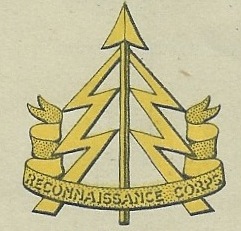 W
WThe Reconnaissance Corps, or simply Recce Corps, was a corps of the British Army, formed during the Second World War whose units provided the mobile spearhead of infantry divisions. It was formed from infantry brigade reconnaissance groups on 14 January 1941.
 W
WThe Rhodesian Special Air Service or Rhodesian SAS was a Rhodesian special forces unit. It comprised:C Squadron, Special Air Service Regiment (Malayan Emergency "C" Squadron Special Air Service 1 Special Air Service Regiment
 W
WRogers' Rangers was a company of soldiers from the Province of New Hampshire raised by Major Robert Rogers and attached to the British Army during the Seven Years' War. The unit was quickly adopted into the British army as an independent ranger company. Robert Rogers trained and commanded the rapidly deployed light infantry force, which was tasked mainly with reconnaissance as well as conducting special operations against distant targets. Their tactics were built on earlier colonial precedents and were codified for the first time by Rogers as his 28 "Rules of Ranging" The tactics proved remarkably effective, so much so that the initial company was expanded into a ranging corps of more than a dozen companies. The ranger corps became the chief scouting arm of British Crown forces by the late 1750s. The British forces in America valued Rogers' Rangers for their ability to gather intelligence about the enemy. They were disbanded in 1761.
 W
WSissi is a Finnish term for light infantry which conducts reconnaissance, sabotage and guerrilla warfare operations behind enemy lines. The word sissi, first attested in the modern meaning "patrolman, partisan, spy" in 1787, comes to Finnish from Slavic and refers either to a forest bandit or his yew bow.
 W
WSkirmishers are light infantry or light cavalry soldiers deployed as a vanguard, flank guard or rearguard to screen a tactical position or a larger body of friendly troops from enemy advances. They are usually deployed in a skirmish line, an irregular open formation that is much more spread out in depth and in breadth than a traditional line formation. Their purpose is to harass the enemy by engaging them in only light or sporadic combat to delay their movement, disrupt their attack, or weaken their morale. Such tactics are collectively called skirmishing.
 W
WThe Special Air Service (SAS) is a special forces unit of the British Army. The SAS was founded in 1941 as a regiment, and later reconstituted as a corps in 1950. The unit undertakes a number of roles including covert reconnaissance, counter-terrorism, direct action, and hostage rescue. Much of the information and actions regarding the SAS are highly classified, and are not commented on by the British government nor the Ministry of Defence due to the sensitivity of their operations.
 W
WThe Special Air Service Regiment, officially abbreviated SASR though commonly known as the SAS, is a special forces unit of the Australian Army. Formed in 1957, it was modelled on the British SAS sharing the motto, "Who Dares Wins". The regiment is based at Campbell Barracks, in Swanbourne, a suburb of Perth, Western Australia, and is a direct command unit of the Special Operations Command. It has taken part in operations in Borneo, Vietnam, Somalia, East Timor, Iraq and Afghanistan, as well as many other peacekeeping missions. The SASR also provides a counter-terrorist capability, and has been involved in a number of domestic security operations.
 W
WThe Special Support and Reconnaissance Company, until 1 January 2007 known as the Patrol Company Army Operational Command is the only remaining Long Range Surveillance Company (LRSC) / Long Range Reconnaissance Patrol (LRRP) Coy) in the Danish Armed Forces. The unit is part of the Danish Home Guard, and the only one of its kind, working directly for the Danish Army and the only unit in Danish Armed Forces that uses a woven fabric for its cap badge. Like with the other Danish SOFs, the accepted soldiers have one year probation, before they get their beret with the SSR insignia, and can be considered full members
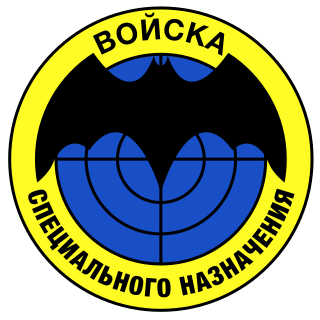 W
WSpecial Forces of the Main Directorate of the General Staff of the Russian Armed Forces, commonly known as the Spetsnaz G.U. or Spetsnaz GRU is the special forces (spetsnaz) of the G.U., the foreign military intelligence agency of the Armed Forces of the Russian Federation.
 W
WStormtroopers were specialist soldiers of the German Army in World War I. In the last years of the war, Stoßtruppen were trained to use infiltration tactics – part of the Germans' improved method of attack on enemy trenches. Men trained in these methods were known in Germany as Sturmmann, formed into companies of Sturmtruppen.
 W
WDuring the period of the Crusades, turcopoles were locally recruited mounted archers and light cavalry employed by the Byzantine Empire and the Crusader states. A leader of these auxiliaries was designated as Turcopolier, a title subsequently given to a senior officer in the Knights Templars and the Order of the Hospital of St John of Jerusalem, in charge of the coastal defences of Rhodes and Malta.
 W
WThe United States Army Rangers, according to the U.S. military, are limited to those who served in designated U.S. Army Ranger units, past or present. However, the term is often used to include those who are graduates of the U.S. Army Ranger School, even though they did not serve in a Ranger unit.
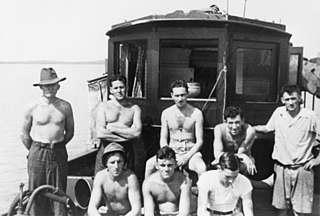 W
WZ Special Unit was a joint Allied special forces unit formed during the Second World War to operate behind Japanese lines in South East Asia. Predominantly Australian, Z Special Unit was a specialist reconnaissance and sabotage unit that included British, Dutch, New Zealand, Timorese and Indonesian members, predominantly operating on Borneo and the islands of the former Netherlands East Indies.